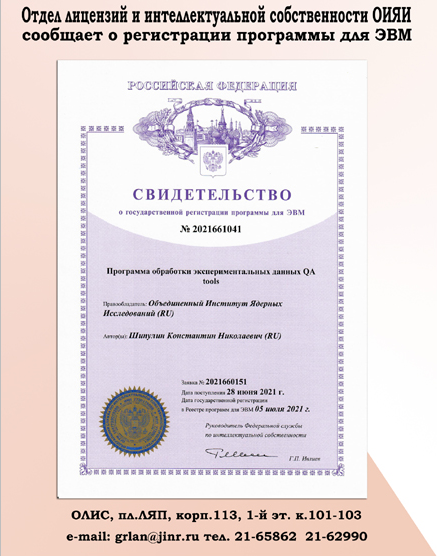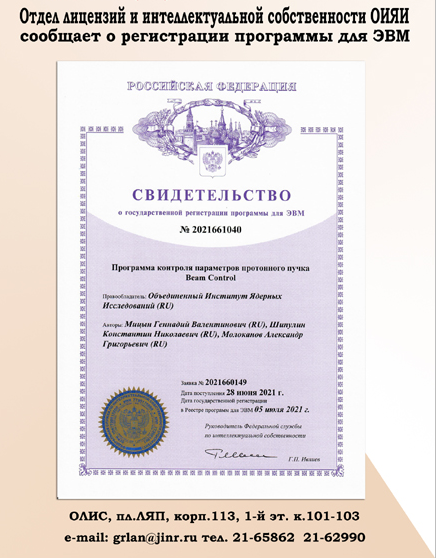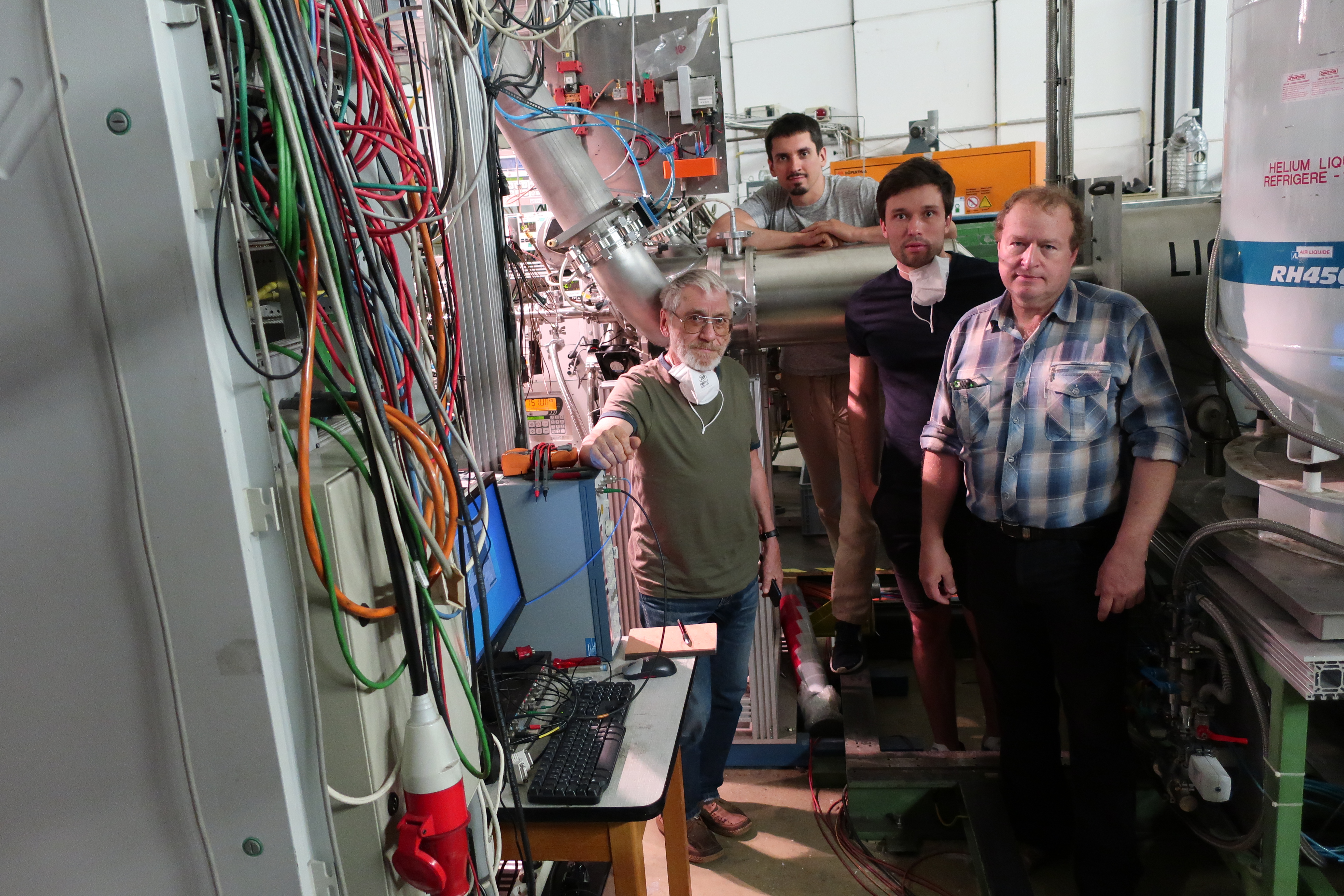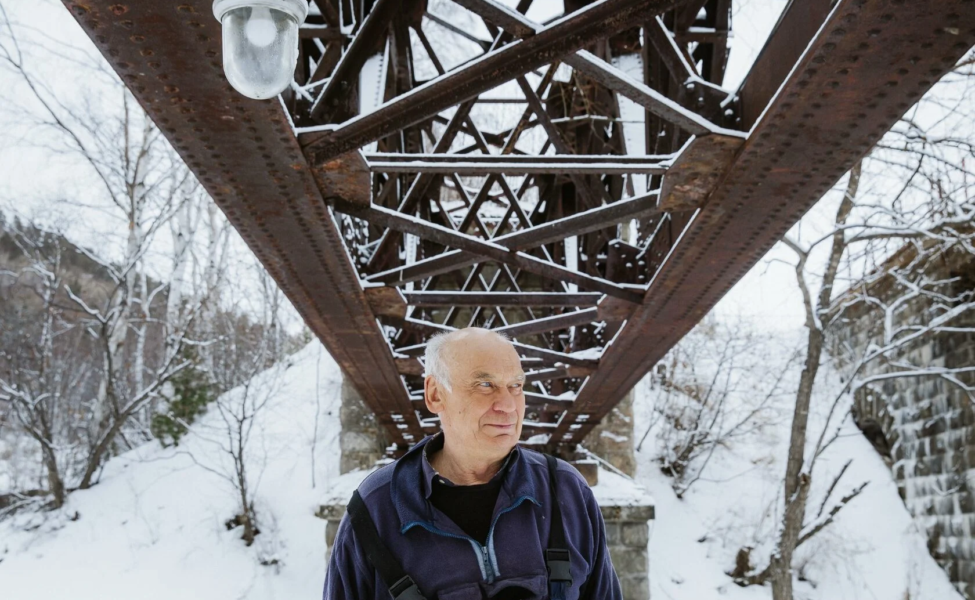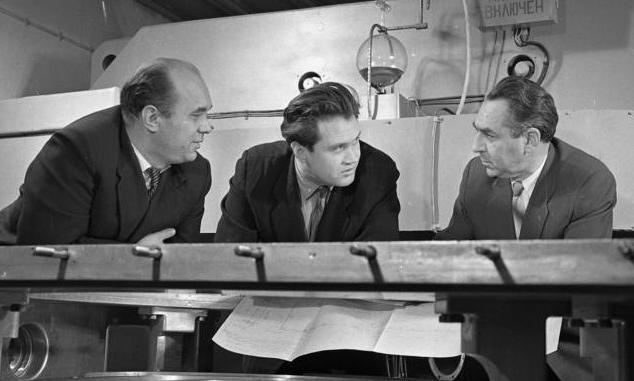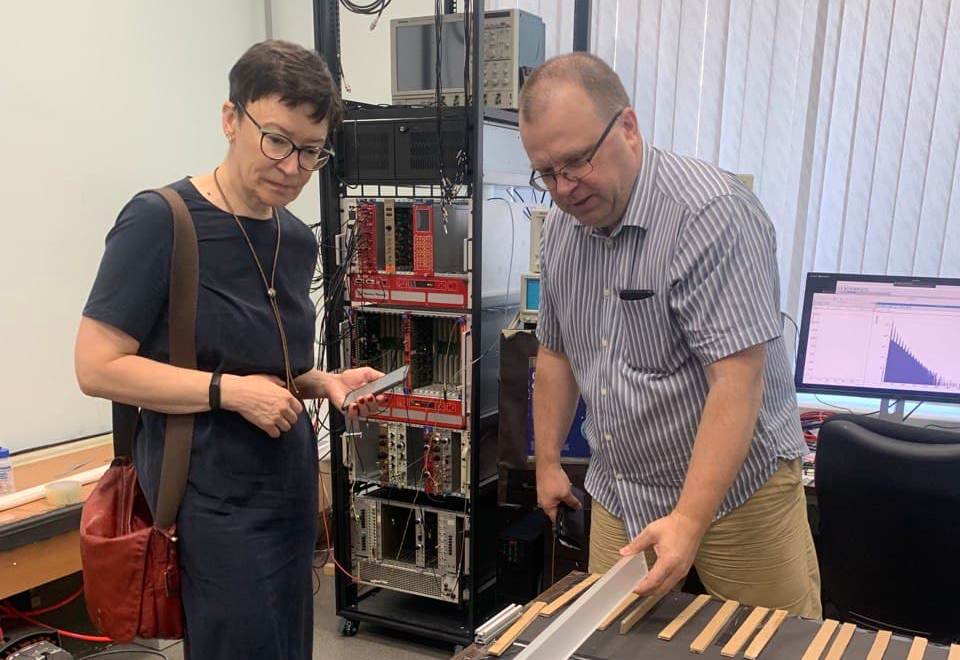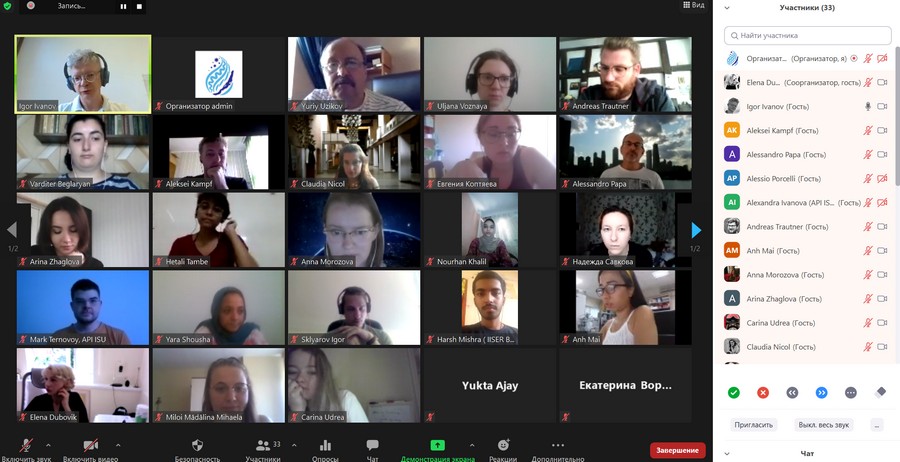News
06.08.2021
Bruno Maksimovich Pontecorvo was an avid cyclist and knew how to ride a bike both with no hands and sitting hind-foremost. It is how he was pictured on the caricature by Mikhail Bilenky, the son of a close friend of Bruno Pontecorvo, Samoil Mihelevich Bilenky. This friendly caricature, as well as bronze statues near the Culture Centre “Mir”, depicts the academician with a “Kama” bicycle. And in the photograph from the archive of the Museum-Study of the scientist, Bruno Maksimovich is standing near the bicycle which resembles the “Lastochka” model.
02.08.2021
Dear colleagues,A new position has been opened:
Position for master's students, PhD students and postdocs in the DUNE project
All job opportunities are available on our website in the About us / Careers section.
28.07.2021
The JINR Department of Licenses and Intellectual Property announces that on 28 June 2021 the Joint Institute for Nuclear Research got a Certificate of State Registration of the software program “Experimental data processing program QA tools” authored by Konstantin Nikolaevich Shipulin.
28.07.2021
The JINR Department of Licenses and Intellectual Property announces that on 28 June 2021 the Joint Institute for Nuclear Research got a Certificate of State Registration of the software program “Program of proton beam parameter control Beam Control” authored by Gennady Valentinovich Mitsyn, Konstantin Nikolaevich Shipulin and Alexander Grigorevich Molokanov.
28.07.2021
Recently, the beam session at the ELSA accelerator of the University of Bonn has been completed. Scientists from the Sector of Low Temperatures (SLT) of the Dzhelepov Laboratory of Nuclear Problems were actively involved in it. The upgraded Crystal Barrel facility at the ELSA accelerator allows measuring double-polarization observables in reactions of photoproduction of neutral mesons. It is these measurements that are crucial to the search for “missing” resonances when studying the processes of photoproduction of mesons and hyperons on protons.
26.07.2021
Today, on 26 July 2021, the Giuseppe and Vanna Cocconi Prize has been awarded at the conference of the European Physical Society on high-energy physics (EPS-HEP 2021).
The international Borexino collaboration received the prestigious Giuseppe and Vanna Cocconi Prize of the European Physical Society in astrophysics and cosmology for breakthrough studies of solar neutrinos providing a unique and exhaustive proof of nuclear fusion reactions in the Sun in the pp chain and in the CNO cycle.
23.07.2021
Nikolay Mikhailovich Budnev, the Dean of the Faculty of Physics of Irkutsk State University, stood at the origins of the Baikal Neutrino Telescope. For over 40 years, since 1981, he has been involved in this project.
The latest edition of the “Let’s voice it” podcast (presenters: Nastya Lotareva (BBC) and Vladimir Shvedov (“Takie dela” (Russian for: “That is the way it is”)) was devoted to Nikolay Mikhailovich and the Baikal Neutrino Observatory. The edition was based on the article “Two thousand three hundred eyes of Baikal. How the Universe is studied in the Earth’s deepest lake” by Natalia Sokolnikova, the journalist of the “People from Baikal” journal.
19.07.2021
Last Saturday, the 21st Baikal Summer School on Physics of Elementary Particles and Astrophysics was completed. It was held online from 12 to 17 July. The School was organized by the Dzhelepov Laboratory of Nuclear Problems (JINR) and Irkutsk State University. This year, about 40 listeners were involved, 13 of them were foreign participants from India, Egypt, Ukraine, Armenia, Romania and Brazil. The students attended lectures on particle physics and astrophysical neutrinos with great interest, discussed some topical problems under the guidance of supervisors, took part in problem-solving sessions, and presented their research.
Igor Ivanov, a co-chair of the Organizing Committee, shared his impressions with us,
17.07.2021
Today, on 18 July, it is the centennial birthday of Doctor of Technical Sciences Boris Ivanovich Zamolodchikov who can rightly be considered as one of the founders of our Institute.
He was invited to Dubna in 1948 soon after graduating from the institute. He was immediately employed as chief engineer of the Hydroengineering Laboratory, the future Laboratory of Nuclear Problems at JINR. He constructed, commissioned and operated the first basic lab facility, a synchrocyclotron, for which he together with his colleagues received the State Stalin Prize. In 1958−1962, he headed the work on increasing cyclotron beam intensity, thanks to which the facility became the then best accelerator of this kind.
The DLNP Group of Scientific Communication talked to Alexander Borisovich Zamolodchikov, a physicist, Doctor of Physics and Mathematics, the son of B. I. Zamolodchikov, about the work, family and philosophy of life of his father.
16.07.2021
The DANSS facility to study reactor antineutrino fluxes is located in the heart of the Kalinin Nuclear Power Plant (KNPP), several metres away from the reactor core. DLNP physicists investigate neutrino oscillations and search for sterile neutrinos whose possible existence is indicated by recent calculations of French researchers.
Not long ago, a previously scheduled upgrade of the facility started which will allow increasing its efficiency and gaining new results in one of the most promising fields of modern physics.
13.07.2021
Today, we commemorate the 80th birthday of Doctor of Physics and Mathematics, Professor Tsvetan Vylov, a prominent scientist and science administrator.
The Bulgarian physicist Tsvetan Dimitrov Vylov started his career at JINR in 1968 at the Experimental Department of Nuclear Spectroscopy and Radiochemistry (EDNSR). He was involved in precision spectrometry of nuclear radiation and initiated a new research direction at JINR, non-accelerator neutrino physics. In 1984, he became a head of EDNSR, in 1988 — a director of the Laboratory, and in 1992 — a vice-director of JINR.
12.07.2021
The first day of the 21st Baikal JINR-ISU School organized by the Dzhelepov Laboratory of Nuclear Problems and Irkutsk State University is over. This year, we are constrained to organize this annual School online. Despite all the constraints, we have gathered about 30 students from several countries who are eager to listen to lectures on particle physics and astrophysical neutrinos and to give their own presentations. Looking forward to five more days of lectures, talks, and questions!




